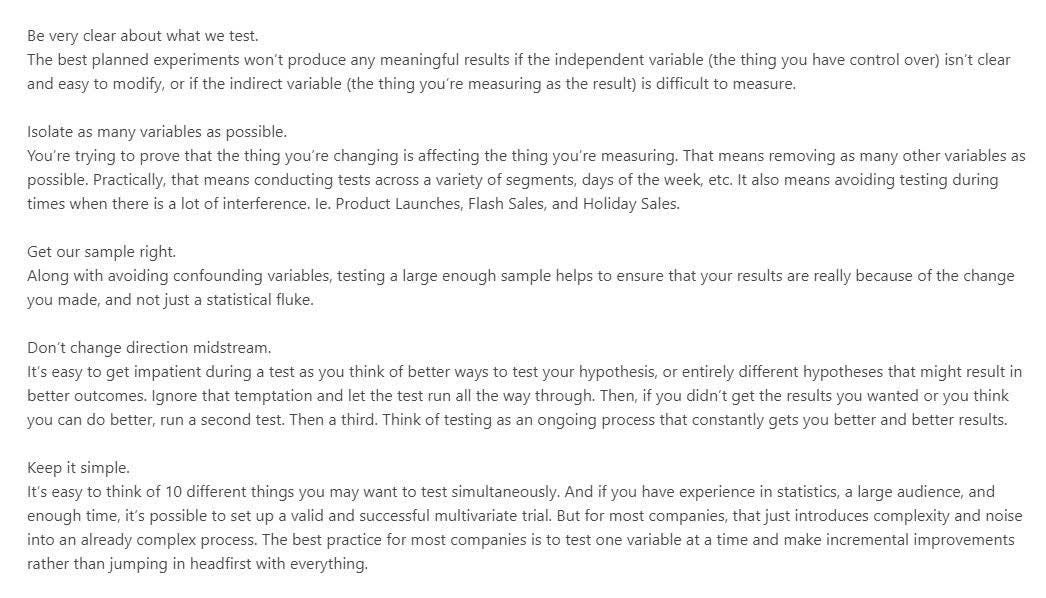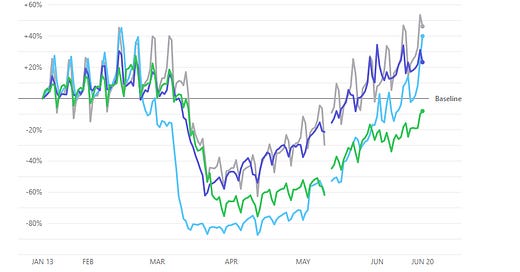It’s probably no surprise to some of you who are running ads (throwing dollars) to an algorithm that is ever-changing on a platform that experiences systemic volatility from time to time, that some weeks in Facebook adland will be painful.
If you’re new to the game, strap yourself in.
Some of us, much like myself and many of those that I connect with on Twitter, have been running FB ads for some time now, and this wave was a little different from the rest.
What wave?
June 12th to June 19th, a 7-day wave that resulted in accounts struggling, ROAS drops of 60-80%, and failed rebuild after failed rebuild.
So, why did it hurt so bad?
Well… for starters, it came directly after a hot ass month of mind-numbing ROAS and performance on the platform for e-comm, DTC, and performance marketers. Our agency included. So, the sting was accentuated.
Couple that with no formal updates from Facebook, or our preferred rep, and it drove a few of us a little crazy. In one account that we had scaled to $10k a week, we saw a 4.71 ROAS drop to a 0.56. Crazy was an understatement when we spoke with Facebook.
While we were informed that there was a massive CBO update happening, there are a few other reasons for this week of lackluster ad performance, in my opinion.
Most notably, my friend Nicholas Kneuper of Ecom.ly (@nkneuper on Twitter) pointed out something rather interesting…
Check out these mobility trends from Apple and you’ll quickly see why CPMs skyrocketed on Facebook:

What is this exactly?
The trends track when iPhones are moving locations. So, you can see that during the peak of quarantine, mobility was down 30-40% as Kneuper notated and that it’s now up 40%+ on weekends.
Meaning, that the more mobility there is, the fewer people there are on their phones, thus resulting in less ad space for you and me.
While CPM (= advertising cost x 1,000 / # of impressions) is not a metric for success as an advertiser, it’s a clear indicator of Facebook’s price tag on the demand for the audience you’re targeting and can be the first metric that alerts to larger issues.
Typically, good profit margins, high AOVs, and LTVs allow you to handle high CPMs when they come. This past week… not so much.
Fun, right…?
This brings me to a quick note: If you don’t have patience, then you’ll never overcome the systemic volatility that I’m referring to. Patience my friends. Patience.
Another opinion, and again… this is just an opinion, is that when Facebook pushed the CBO update, it started over-inflating and miss-reporting metrics.
Most notably, conversion and engagement events were double-counted.
There’s a strong possibility that this “inflated” data led to advertisers thinking they were hot shit and in-turn they started tossing more money at the platform thus, resulting in more competition and higher CPMs for the rest of us.
Now, if you’re like me, this is the exact opposite of what you did.
As soon as I get the error message and even a little before that, I could tell that something was off. So, we either left spend alone or turned it down dramatically.
When the shit storm was confirmed, we lowered them all and communicated it with clients. After all, this wasn’t our first time on this ride.
So, what was done to turn it all around?
For starters, the first thing we did (and the first thing most folks should do), is communicating what we saw to our clients. Advise them that you’ll be lowering spends until you can concoct a game plan for the week.
Next, we restarted a few older ads so that we could get something new into this failed update. Ie. New ad sets inside previously (before 6/12) money campaigns. Make small, minor tweaks to the audience, and turn it back on.
Then, we selected new conversions (IC > PUR or LPV > Lead). IC meaning, Initiate Checkout, PUR meaning Purchases, and LPV meaning Landing Page Views.
On top of that, we started up some Min. ROAS campaigns on interests audiences that were well below our desired goal for success metrics for an account (30% below). Historically, Min. ROAS has been absolutely terrible for us as an agency, but it was worth testing in this scenario and it numbed the pain a little bit.
Important tips:

Finally, we trusted our team and the processes that we’ve created together. We back ourselves 100% and in-turn receive trust from our clients. Even in trying times.
Chris Mikulin posted a similar take, pretty damn clearly:

Again, for the majority of us veterans, we’ve all been here before… meaning, we know how to react. To me, that’s a key attribute to being a good advertiser.
When something doesn’t look or even “feel” right with Facebook ads, start testing, and lower spending. Gather your thoughts and create a game plan of tests with a lower budget. There’s no sense in throwing money at an account with issues. But, there is sense in taking some time to allocate a portion of the lowered budget towards testing and continuous improvement.
Speaking of continuous improvement, check out this brief SOP that we use internally. As time and resources allow, we'll come up with hypotheses that can answer these questions, and transform them into experiments that we can run:

You can also check out Ryan’s “engine failure” guide lol.

This won’t be the last time where we experience something similar. So, be prepared and start gathering notes on what worked this past week so that you have it in your arsenal going forward.
With that, I’ll wrap things up and link to something you’ll probably want to check out.
It’s a little course by a well know advertiser, Andrew Foxwell.
While my content will be free for the foreseeable future, I have no problem linking you to paid resources that myself and others in advertising, believe are actually worth your while.
The new course, that took Andrew and his wife (@GracieFoxwell) about 43 hours to research and develop: ‘Facebook Reps vs. Reality. What Works Right Now and What Doesn’t’ will help teach you why it’s important to be cautious about FB Reps’ recommendations by showing what’s actually working right now.
You can check it out here and get $30 off using @CoryDobbin ‘s code: CORY30
This is incredibly powerful, as, during the past week, we literally had a preferred rep essentially advise us to spend more money to overcome the issues we were experiencing…
I laughed and immediately requested a new rep, in which case we got a new TEAM! Which, will hopefully provide my agency/clients with more value, which I can then return to you.
If you have further insights or theories as to what the hell happened last week, I’d love to hear them.
As for when and how often I’ll be creating gems like this… I’m not sure yet. For now, it will be whenever I need to do a brain dump or when something unique happens where I can recap with mine and others’ opinions.
That’s all I’ve got for this first post and I hope there’s some value here. Remember, you’re not alone in this and if you need anything, ping me on Twitter.
Cheers,
Jake the Ad Nerd
🤙
PS. If you’re wondering, have we seen a “comeback” or move to a “normal state” on all of our accounts in the past 48 hours? Yes, 🤓 the crap week didn’t do enough damage to slow us down entirely and we’re still seeing a 30-Day average ROAS of 3.71.
If you consistently execute and operate with patience, you can ride these waves.



